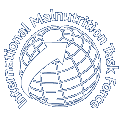Experience in managing severe malnutrition in a government tertiary treatment facility in Bangladesh
 Hossain MI, Dodd NS, Ahmed T, Miah GM, Jamil KM, Nahar B, Alam B, Mahmood CB. Journal of Health Popul Nutr. 2009 Feb;27(1):72-9
Hossain MI, Dodd NS, Ahmed T, Miah GM, Jamil KM, Nahar B, Alam B, Mahmood CB. Journal of Health Popul Nutr. 2009 Feb;27(1):72-9
Experience in managing severe malnutrition in a government tertiary treatment facility in Bangladesh has demonstrated the potential of addressing severe acute malnutrition (with complications) effectively with minimum incremental expenditure in Bangladesh.
One hundred and seventy one children aged less than five years (mean +/- SD age 23.5 +/- 15.3 months) were admitted during June 2005-May 2006 out of which, 66% were aged less than two years, and 84.2% belonged to households with a monthly income of less than US$ 40. The main reason for admitting these children were associated major illnesses: bronchopneumonia (33%), oedema (24%), diarrhoea (11%), pulmonary tuberculosis (9%), or other conditions, such as meningitis, septicaemia, and infections of the skin, eye, or ear.
Among the children (138) studied, 88% successfully graduated from the Nutrition Unit with a mean weight gain of 10.6 g/kg per day (non-oedematous children) and loss of -1.9 g/kg per day (oedematous children), 86% graduated in less than three weeks, and the case-fatality rate was 10.8%. The average cost of overall treatment was US$ 14.6 per child or approximately US$ 1 per child-day (excluding staff-cost). Food and medicines accounted for 42% and 58% of the total cost respectively.
The study also recommended that a public-private approach should be used for treating severe acute malnutrition in all healthcare facilities and the treatment protocol included in the medical and nursing curricula.
Click here for the full article
